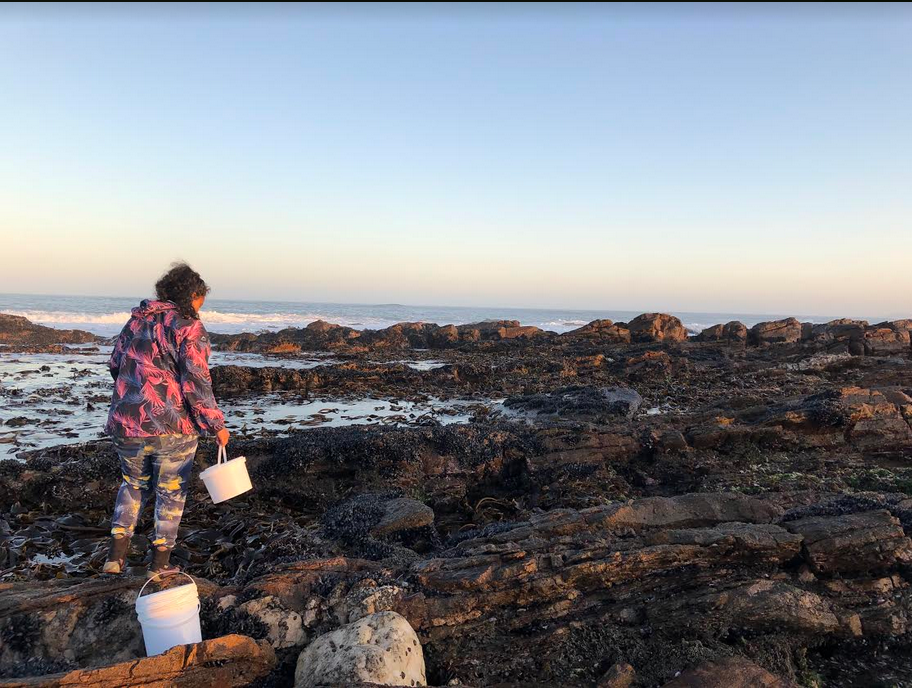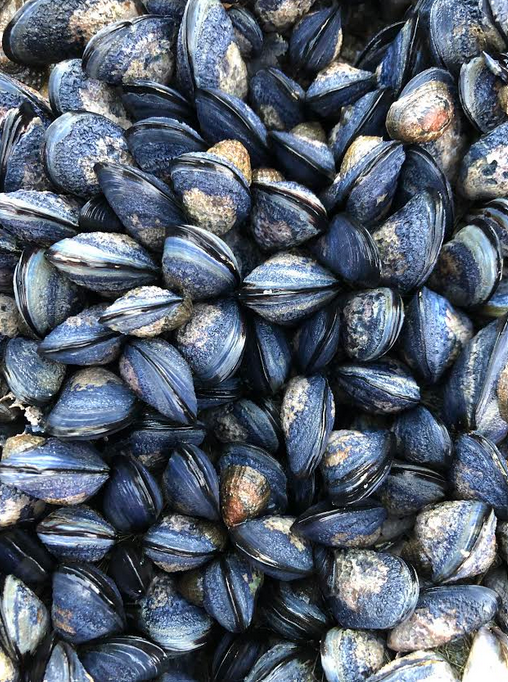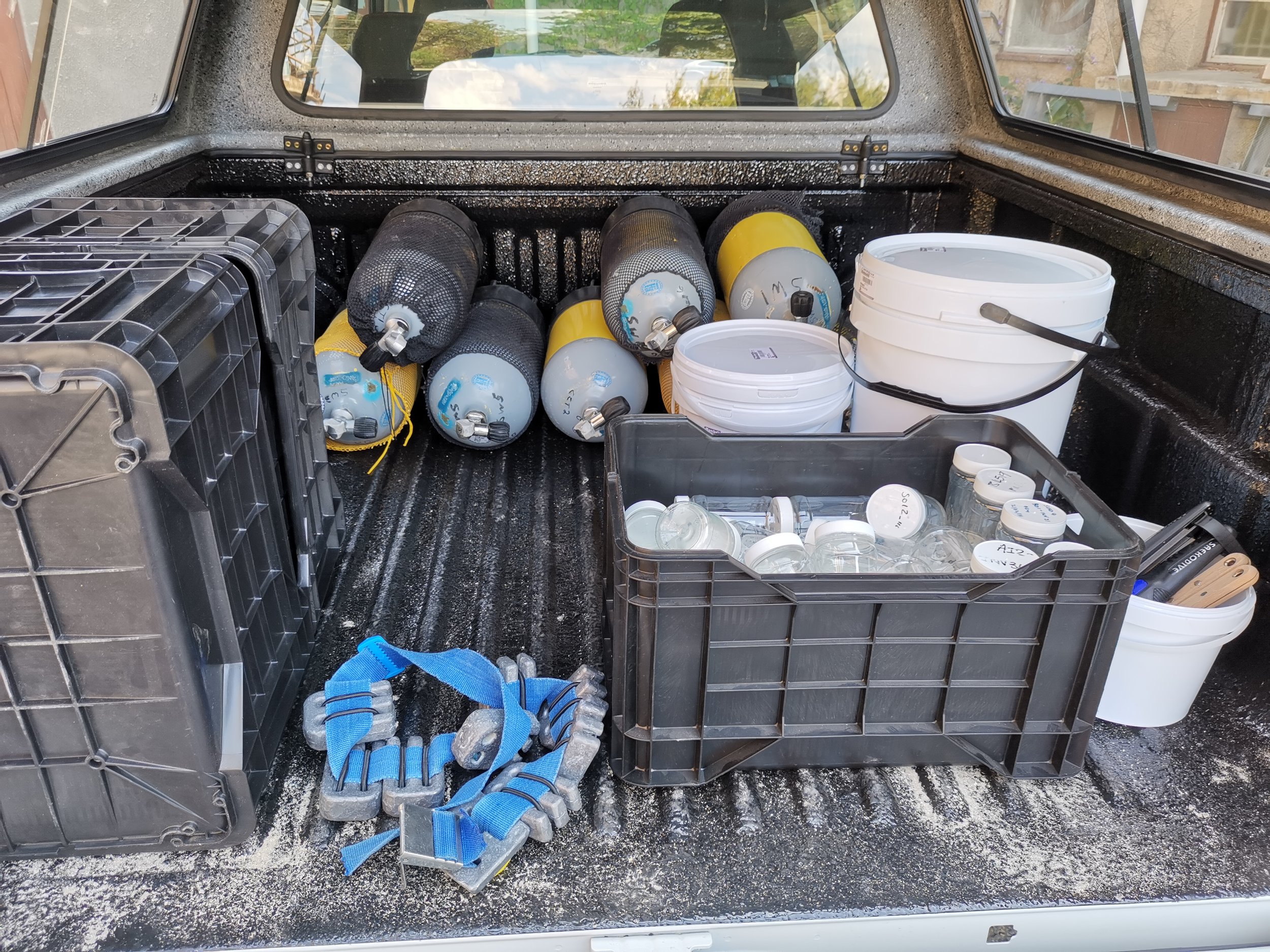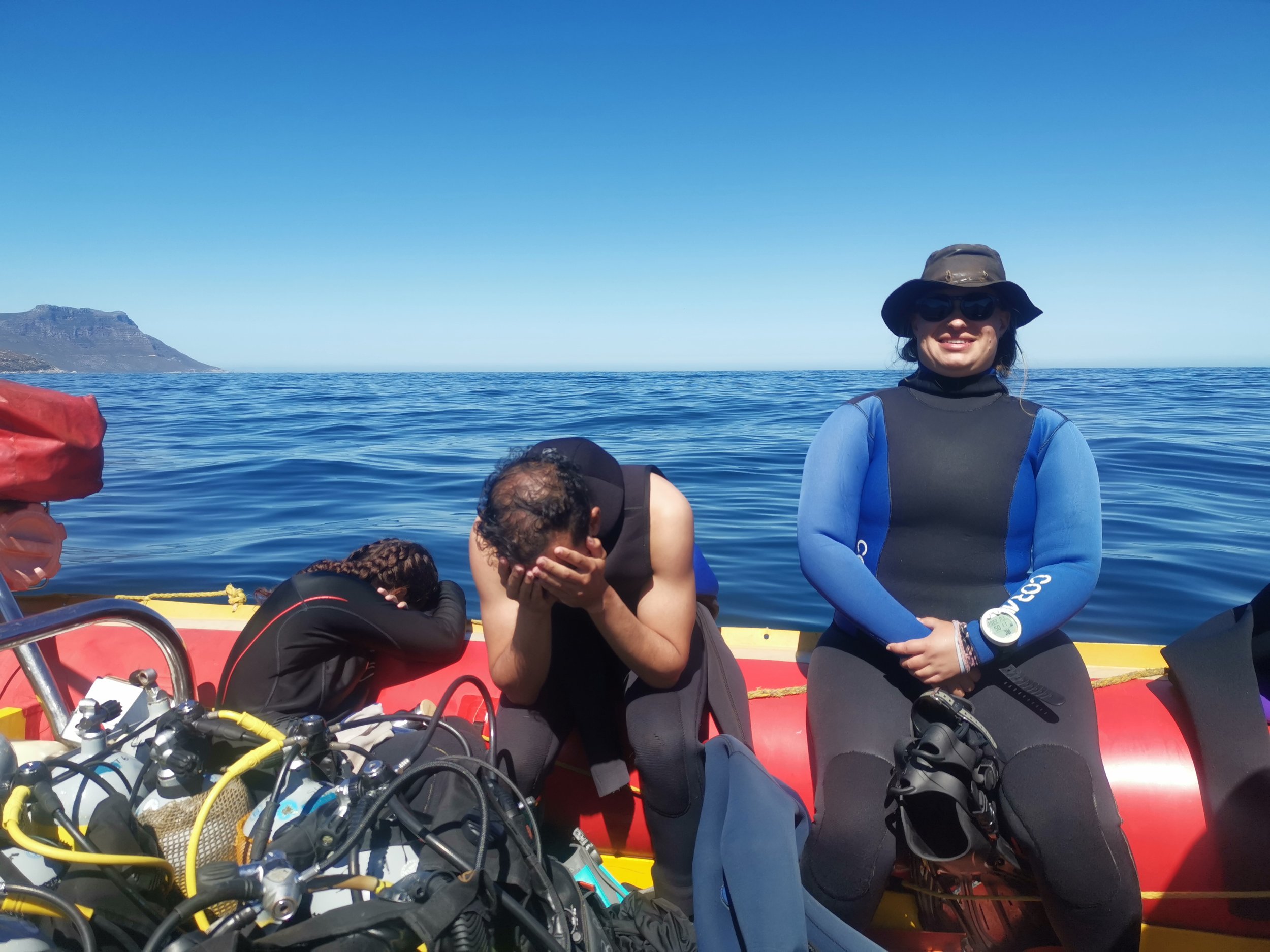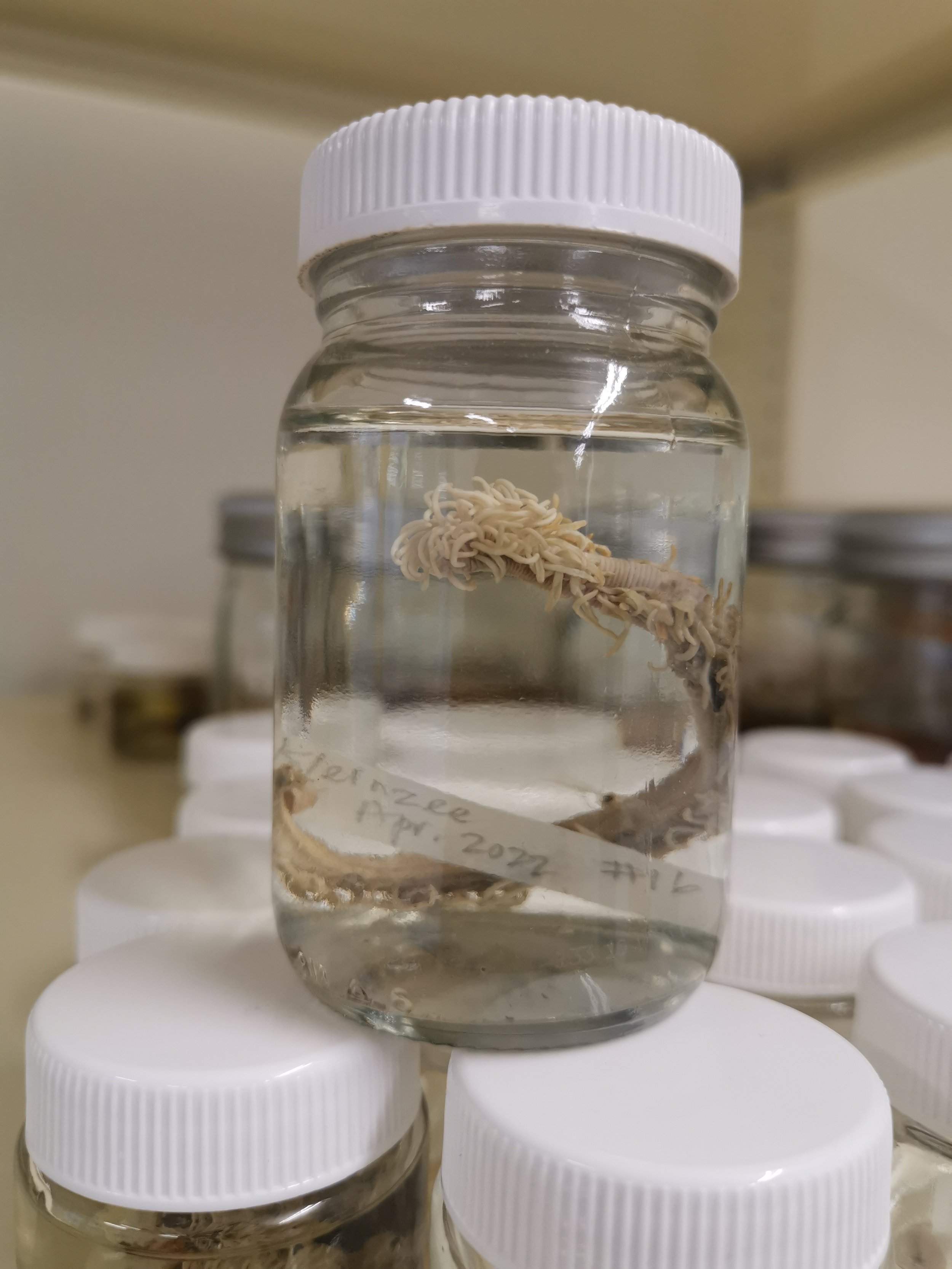A day in the life of a MARINE BIOLOGIST
World Ocean Day, 8th June 2022
"The best scientists and explorers have the attributes of kids. They ask questions and have a sense of wonder. They have curiosity. Who, what, where, why, when, and how!" – Dr Sylvia Earle, American marine biologist, explorer, author and lecturer
Many people around me or who I meet, grew up wanting to be a marine biologist. On asking why, the most common answer is “to work with the whales and dolphins”. Confession: I am, in fact, one of those kids who wanted to work with the whales and dolphins. However, I continued to dream about studying marine biology and yes, I still got to work with and on whales and dolphins during my career, but I also got to work on other interesting animals, mainly on marine invertebrates (i.e. an animal without a backbone). After years of academic studies, I finally became a marine biologist specialising in tiny marine creatures called moss animals or bryozoans. The most familiar marine invertebrates include crabs, corals, sea anemones, jellyfish, sea stars, sea urchins and shrimp.
As a marine biologist, my journey to studying the ocean started from a young age. Like other marine biologists, we all share a fascination for marine life and study anything from the largest whale down to tiny plankton, microbes, and even the seawater itself. We may also assess the impacts of human activities on our marine life. We are obsessed with data collection and data analysis, because marine biology is not just about exploration, it is a science.
Now, let's take a closer look at what a day for a marine biologist is like.
Preparing for the Day
Most of my fellow marine biologists would agree, a good cup of coffee is how we start the day! Whether it be caffeinated or not, we believe in a good coffee ritual. Not surprisingly, in an annual survey done in 2011 on U.S. coffee consumption trends in the workplace, they found that scientist and lab technician professions are the heaviest coffee drinkers.[1]
There is no such thing as a ‘typical day’ for most marine biologists. How and what you prepare for your day is also dependent on what type of marine biologist you are. That’s right, there are different types of marine biologists like you have different types of medical doctors who specialises in a field, for example paediatricians, cardiologists and obstetrician-gynecologists.[2]
Many marine biologists work under job titles such as wildlife biologist, zoologist, fish and wildlife biologist, fisheries biologist, conservation biologist and so forth. As a curator of marine invertebrates working with biological museum collections, I spend my time caring for and managing the collections, dealing with queries from researchers interested in the collections, and assist in coordinating scientific exhibitions. Marine biologists may also spend a significant amount of time outdoors when conducting research.
In the Field
Fieldwork often involves working on sea vessels (i.e. boats and ships) to locate, tag, and monitor marine animals and their movements, to collect seawater samples and collect samples of plants and animals. Some people experience seasickness or motion sickness on sea vessels, while others do not. Seasickness can affect anyone and may cause nausea and vomiting, and fortunately there is anti-nausea medication available to reduce the risk of getting sick.
Fieldwork is planned ahead of time because we need fairly good weather conditions – it would be difficult to collect any samples in gale force winds or storms! Some days we have to SCUBA[3] dive and collect samples up to 30 meters deep. We also need research assistants, equipment, and tools for the field. The amount of time spent in the field varies greatly depending on the data being collected.
(Left) An early morning start to the day during low tide at the rocky shore with buckets to collect specimens. (Right) Dense mussel beds are a common sight in some parts of the coast. This is the invasive Mediterranean mussel, Mytilus galloprovincialis Lamarck, 1819. Photo credits: Dr Kevin Ma
(Left) An example of packing for fieldwork including air cylinders and weight belts for SCUBA diving, containers and small tools. (Right) Some people get seasick, while others (clearly) do not.
As much as we plan our fieldwork, sometimes there are animals that wash up onto the shore and we are contacted by the authorities to assist and collect the (dead) specimens for research. There are many reasons animals – sometimes hundreds at a time – wash up on beaches worldwide, and may include an illness, injury or disorientation. Common animals that wash ashore are whales, giant squid, jellyfish, and sharks – sometimes these animals are still alive, and authorities are able to assist them. The most recent story that made headlines is the giant squid that washed up at Kommetjie Beach in Cape Town.
In the Laboratory
The samples collected needs to be sorted, labelled and stored typically in glass jars or bottles with seals until further examination. We commonly use ethanol or isopropyl alcohol as a fluid preserve. This method of preservation causes a chemical alteration of the specimen and can lead to discolouration, shrinking, or swelling of the specimen, but ultimately these collections are able to last for hundreds of years! As for time spent in the field and laboratory, this may only be about 20-30% of our time.
(Left) Orange thread-gilled worm Cirriformia capensis (Schmarda, 1861) collected in Kleinzee, Northern Cape. Photo credit: Kevin Ma (Right) The same specimen after being fixed and stored in ethanol, note the discolouration and shrinkage.
At the Desk
In reality, we spend nearly 80% of our time at our desk! Analysing data, writing scientific papers for publication in scientific journals, budgeting, writing reports and funding proposals, as well as designing, supervising and implementing research projects are part of a marine biologist’s life. It sounds tedious, some tasks are, but overall I love being a marine biologist! According to a survey, marine biologists in the U.S. are one of the happiest careers.[4] Scientific careers can be challenging, but it is worth noting that “No matter what comes your way, let passion drive your profession, and never forget to have fun while doing it.” – Leila Nefdt, South African marine biologist and Director of Sea the Bigger Picture NPO
[1] Robbie Gonzalez. 10 February 2012. Here are the fifteen professions that drink the most coffee. Guess who's number one. Accessed on 6 June 2022, https://gizmodo.com/here-are-the-fifteen-professions-that-drink-the-most-co-5948206.
[2] Kathryn Whitbourne. 26 January 2020. What Are the Different Types of Doctors? Accessed on 6 June 2022. https://www.webmd.com/health-insurance/insurance-doctor-types
[3] The acronym ‘SCUBA’ stands for “self-contained underwater breathing apparatus”.
[4] CareerExplorer. Are marine biologists happy? Accessed 9 June 2022, https://www.careerexplorer.com/careers/marine-biologist/satisfaction/

